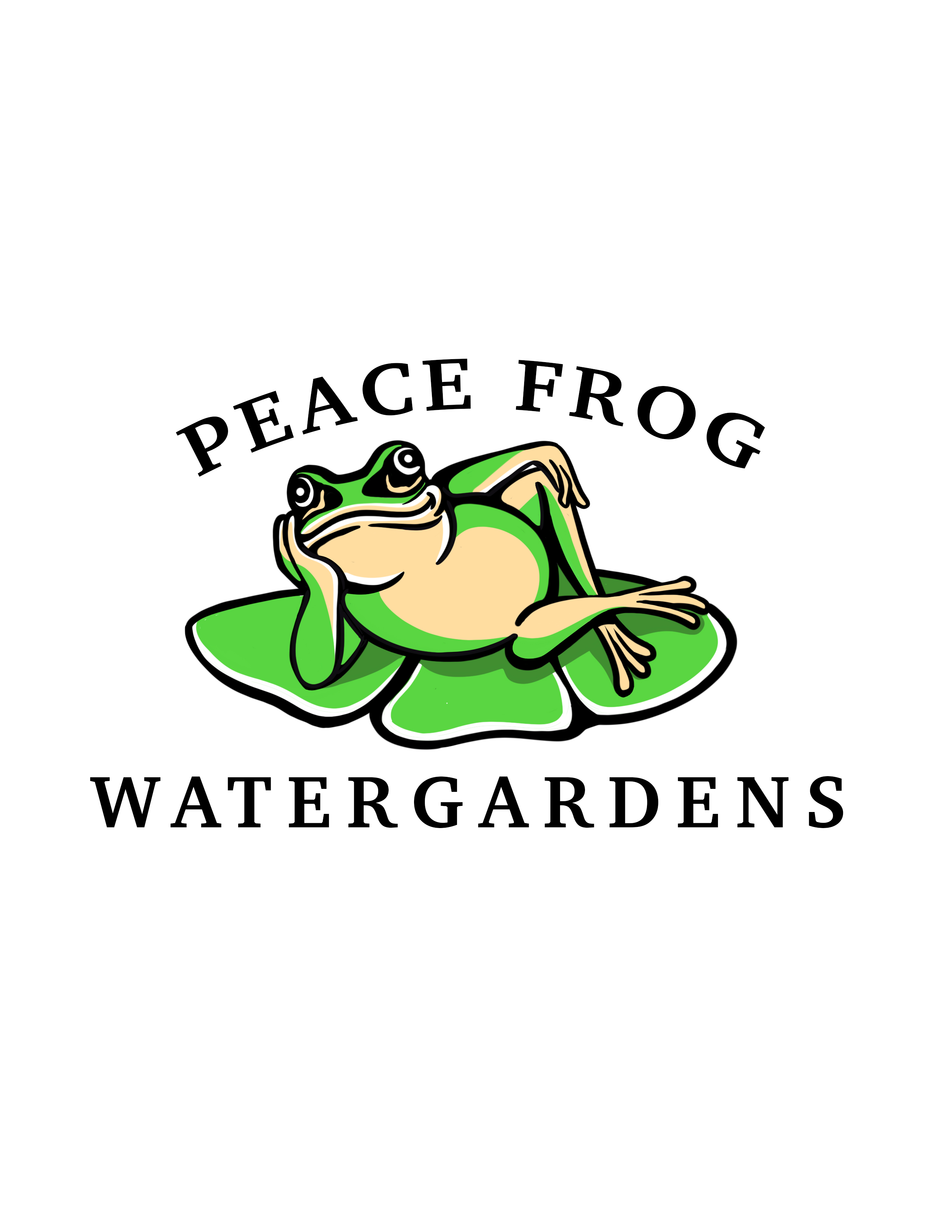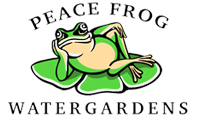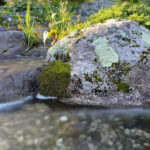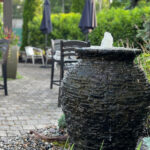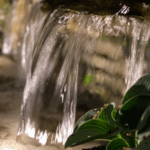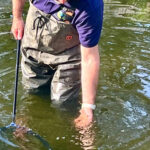PEACE FROG WATER GARDENS
Frequently Asked Questions
Below you will find some commonly asked questions. PLease feel free to reach out to us with any additional questions you may have by using the form below the FAQ section. We will be happy to answer all of your questions!
Ecosystem ponds can be easy to understand if you have a good grasp of what components go into a basic, functioning ecosystem. An ecosystem pond works with Mother Nature to provide food, shelter, and safety to the wildlife around it. It also provides you with an all-natural, low-maintenance piece of paradise. It’s important to remember, however, that every piece of the ecosystem puzzle must be present in order for a true ecosystem to be in place. Eliminate one of these elements and you’ve got an unbalanced ecosystem that won’t be so low-maintenance anymore. Check out the things you’ll need to get your ecosystem pond fired up:
Circulation System is really just a fancy way of saying “pumps and plumbing.” The proper size pump and pipe diameter are extremely important for the aesthetics of a water feature. More importantly, an efficient circulation system keeps the water moving and provides the necessary oxygen levels for healthy fish and plants.
Proper Filtration System includes the use of both a biological and a mechanical filter. A biological filter provides surface area for beneficial bacteria to colonize and remove excess nutrients from the water. A mechanical filter will not only pre-filter the water and house the pump; it will also skim debris from the water’s surface to prevent the accumulation of organic materials on the pond floor.
Fish are an integral part of any ecosystem. Unfortunately, fish are often seen as creating a maintenance nightmare. Contrary to popular belief, fish will actually reduce pond maintenance, as they graze on string algae and bottom feed from the pond floor.
Aquatic Plants are Mother Nature’s true filters. Plants are great for adding character to a pond by providing color and texture, but from a filtration perspective, they’re second to none. Thriving from the excess nutrients in a pond and depriving algae of its food source, the aquatic plants in a water garden, given proper coverage, are critical for the overall health of the ecosystem.
Rocks, Gravel, and Bacteria have been a controversial element in the hobby for many years. Many enthusiasts have steered away from rocks and gravel out of fear that their system will become a maintenance nightmare. On the contrary, rocks and gravel will not only make your pond look more natural, they will also protect pond liners from UV light degradation and they provide tremendous surface area for beneficial bacteria to break down excess nutrients in the water and dissolved organic debris on the pond floor.
Having all these things in place makes all the difference in the health and success of your water garden. Use them and work with Mother Nature, not against her, for a chemical-free wonderland of water! The truth is that most people opt for the ecosystem way of water gardening because it’s easier and it just makes sense. A low-maintenance ecosystem pond provides you with more free time to enjoy friends and family … while gathered around your pond, of course!
A properly-designed pond will not attract mosquitoes, as mosquitoes prefer stagnant water to produce their offspring. Most backyard-ponds have constantly moving water, between the skimmer and the waterfalls/streams. Additionally, any mosquito larvae that manage to hatch will either be sucked into the skimmer or eaten by the fish. If your pond does not have a skimmer and/or fish, consider getting a pump and fountain combination. This should create enough water movement to discourage mosquitoes from visiting your pond.
A wetland works just like a biological filter, but instead of creating a waterfall; it creates an area in your pond thick with naturally-filtering plants, as well as rocks and gravel, which provide a surface for bacterial colonization … nature’s perfect filters. So a wetland, while naturally beautiful and pleasing to the eye, is a great filtration method, and will help keep your water looking crystal clear.
One of the greatest things about wetland filtration is that it can be used with almost any system. But will it fit in with your pond? Do you have to have a lot of space to construct a wetland? There are no size limitations because it acts as your biological filtration. The plants, rocks, and gravel act as the filtration media, similar to what you see in nature.
The Benefits
Sure it might look pretty, and it might be designed like a wetland straight out of the marshlands, but how clean does it keep the water? Some say it’s even better than a biological filter, but in actuality, the benefits are very similar. Wetland filtration balances out your water very well, sometimes better than the biological filter, and once it is balanced, your pond will require less water treatment application.
If you install a larger pond with more than one biological filter, the financial benefits of the constructed wetland system will make your customer’s pocketbook pretty happy. If you only have one waterfall, the energy consumption is about the same, but if you have multiple waterfalls, powered by multiple pumps, you can save money by using the wetland system instead.
Learning the Secret
The key to a wetland filtration system lies with the plants. Plants are an integral part of a balanced pond ecosystem and help create a natural looking environment, which is becoming more important to today’s consumer. Plants help purify the water by reducing nutrients, filtering out sediments and absorbing toxic compounds through the process of phytoremediation, they’re also the basis of a food web in which pathogens are consumed by microorganisms associated with the aquatic plants.
Another key to the filtration lies in the sediment chamber created by the AquaBlox® on the bottom of the wetland. This sediment chamber reduces the velocity of the incoming water below 2 feet/second, allowing the sedimentation process to occur while dispersing the water evenly along the bottom of the wetland. The slow, even flow of water is necessary for optimal contact time between the water and gravel bringing nutrients and oxygen to the bacterial colonies. Beneficial bacteria are housed in this gravel, providing your first layer of filtration before the water even hits the plant roots.
The important thing to remember when considering a constructed wetland filter is that, similar to your biological filter’s placement, the wetland filter should be flowing down to your pond for optimal efficiency. The wetland must sit a little higher than the pond because you need the water to flow back into the pond, because the bacteria housed in the wetland will consume dissolved oxygen as they utilize nutrients. This flow of water in the form of a waterfall or swift-moving stream back into the pond is a natural way to re-oxygenate the water.
The Snorkel® and Centipede®
Aquascape snorkel vault and Centipede® Module, along with a layer of small AquaBlox® strategically positioned along the bottom of the filter makes building a wetland simple. All you need to use in conjunction with these two components is a pump appropriate to the amount of water flow, rock and gravel, wetland plants, piping that is appropriate for the size of your pump, a skimmer or wet well, and, of course, water.
The water flows through the plumbing from the wet well or skimmer, into the Centipede Module, which pushes the water into the AquaBlox® sediment chamber up through the layers of gravel where it comes into contact with beneficial bacteria and then the plant roots for final filtration. The Snorkel® Vault is convenient for cleaning any sludge that may accumulate on the bottom through usage. Simply pop off the cap and you have complete access for easy cleaning.
What about the Waterfall?
Maybe your customer wants a wetland but doesn’t want to lose the beauty and sound of a waterfall. No problem! Your customer can have both! You can’t over-filter a pond. It’s virtually impossible. And remember, for large ponds, incorporating both a constructed wetland and waterfall will cost less in operational costs than two waterfalls.
What some installers don’t realize is that your biological filtration actually acts as a wetland filtration system of sorts when you place certain plants in the top of it. Water hyacinth and water lettuce are always a fan favorite, but certain marginals like iris, dwarf cattails, pickerel rush, and any tropicals also work. The important thing to remember is that all of these plants will have to be removed when the cold temperatures hit. You may want to keep some of them in pots for easy removal before the winter winds howl. This may inhibit their filtration a bit, but something’s always better than nothing when it comes to filtration.
So even without a full-fledged constructed wetland system, you can feel comfortable that a wetland of sorts is working in your pond by adding aquatic plants inside the top of the biological filter. After all, the same process is in effect, with water pushing up and through the filter media, and then up through your plant roots.
Wetlands Work
The bottom line is that constructed wetlands work, and they make any pond look natural and gorgeous. What’s more, natural wetlands and the associated riparian habitats are the most biologically diverse habitats on earth, more species of plants and animals are associated with them than any other type of ecosystem.
But because of our construction practices and changes to natural hydrology, these systems are under great stress. By adding a small wetland in your customer’s backyard, you’ll be helping to preserve the natural biodiversity of your community. With today’s growing tendency toward creating sustainable landscape solutions, you can see why wetland filtration is an obvious choice for today’s environmentally-conscious consumer.
Water Feature Maintenance Plans and Repair Services
Need Service or Repair? We’ve Got You Covered
